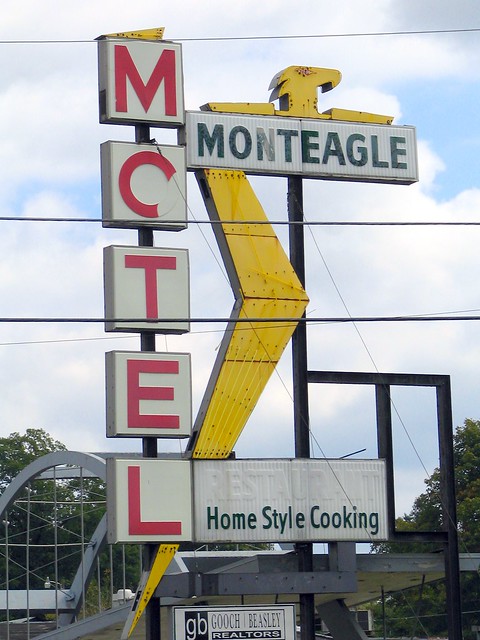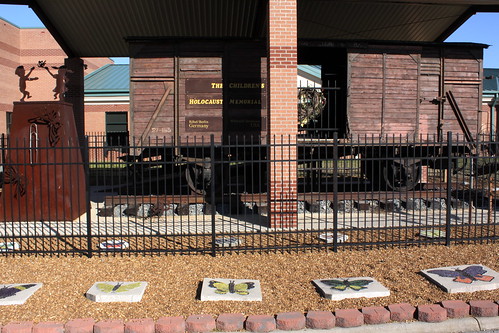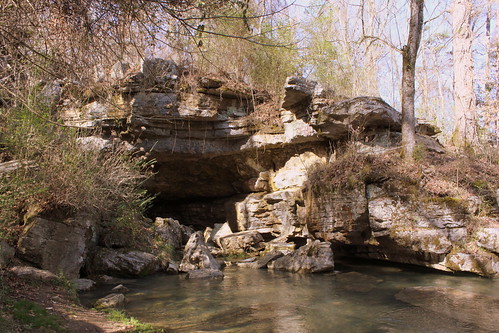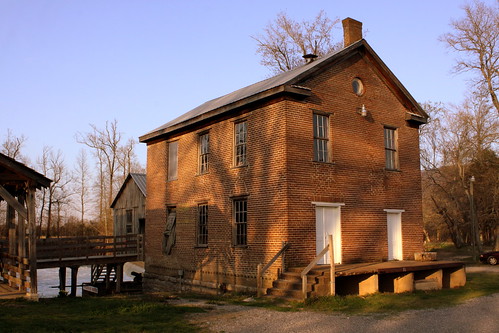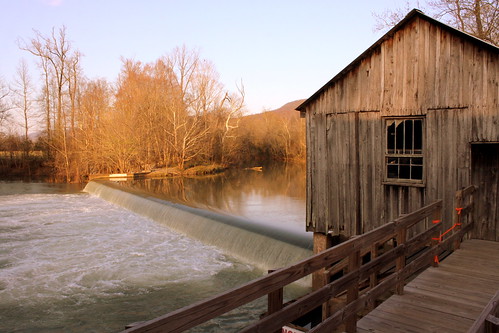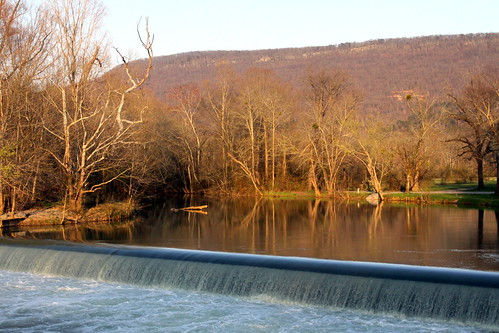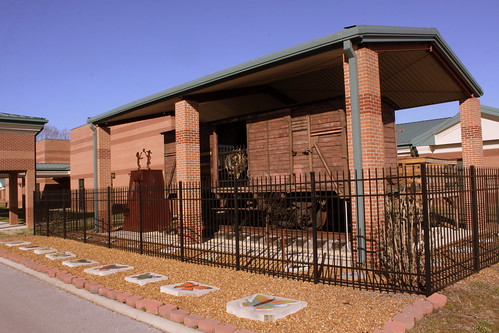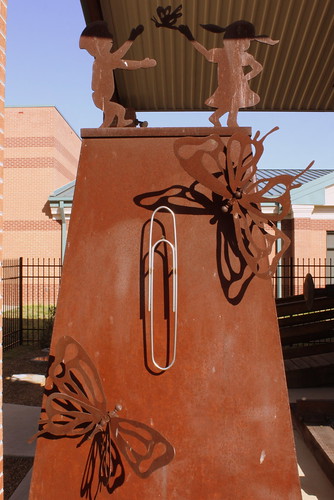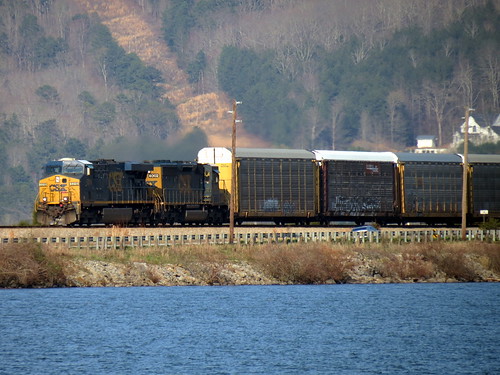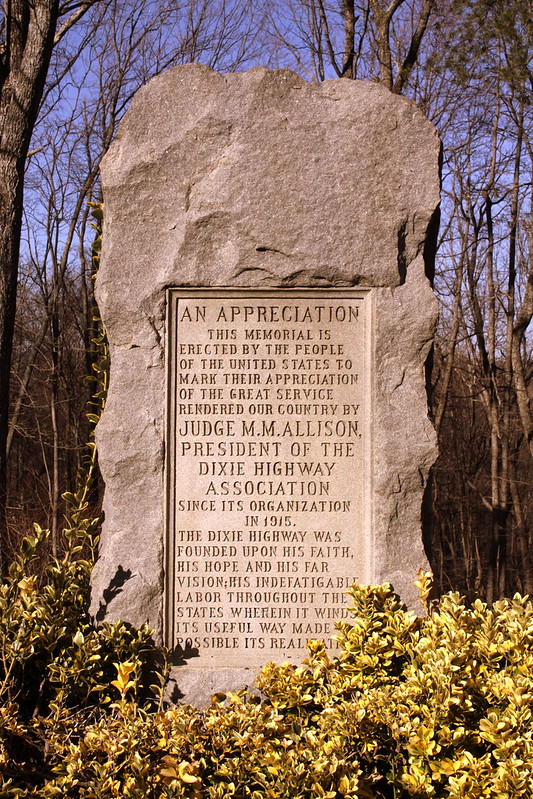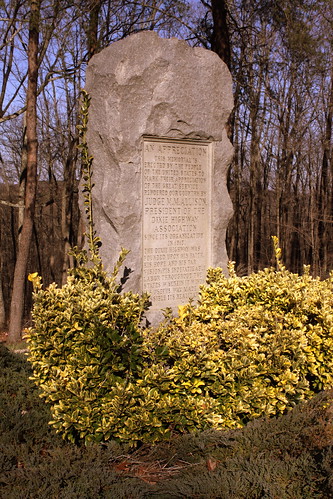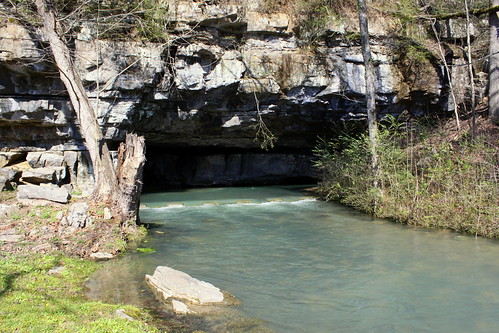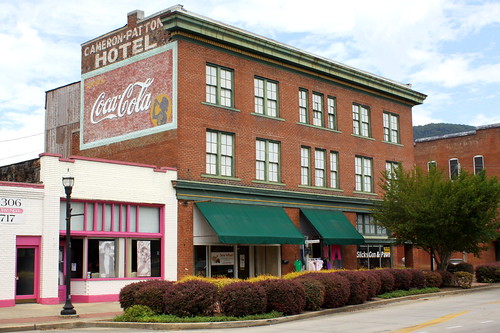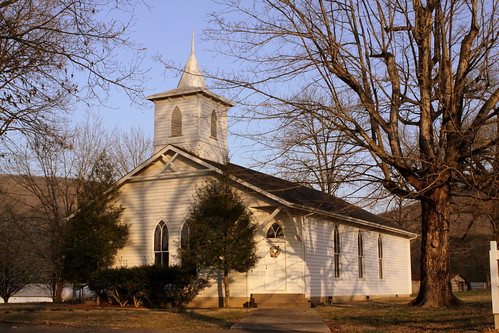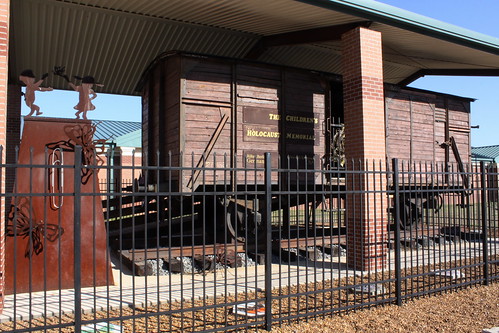
Located in Marion County, TN, Nickajack Cave not only has quite an interesting history but also has an important collection of endangered species. The entrance is 140 feet wide and
originally 50 feet high.
Originally located on Cherokee Land, the cave was located near the Cherokee city of Nickajack. Beginning in 1800, saltpeter (which is a key ingredient to gunpowder) was mined here, and eventually used for the War of 1812 and then the Civil War. Around the time of the war, the cave was owned by Robert Cravens, who also owned Lookout Mountain Cave and is best known for his
Cravens House.
Starting around the 1870's, the cave opened commercially. The Shellmound Railroad Station was very close to the cave which operated passenger service to and from Chattanooga daily. Tour guides would take visitors through the cave on boats. By the 1940's, the cave was run by Leo Lambert (who also operated
Ruby Falls) under the name Nickajack LaCaverns. By the early 1960's, the cave was closed commercially, but the cave was still accessible by people who were willing to walk a quarter mile in waste-deep water.
One part of the lore of the cave happened in 1927 when the cave was being shown by Lawrence S. Ashley, who supposedly disappeared in the cave during exploration. His disappearance was covered by both the local Chattanooga newspapers and the New York Times. After being "lost" from August 15 through August 22, 1927, Ashley reappeared, claiming that he dug his way out through a new entrance located 8 miles away. This entire episode was a hoax designed to gain publicity for the cave and increase the number of tourists visiting the cave.
in 1967 with the construction of Nickajack Dam about a mile away, the landscape of the entire area has changed. What used to be an entrance 50 feet high is now half underwater. The old ticket booth and entrance gate are under the water there somewhere.
in 1968, Johnny Cash visited the cave with the intention to commit suicide. While there, he had a spiritual experience that caused him to stop his drug use.
Environmentally, the cave his home to about 100,000 Gray Bats, which is an endangered species. Every evening, many of the fly out of the cave for about 45 minutes to feed on insects. In 1980. the Tennessee Wildlife Refuge Agency closed off access into the cave and added a fence across the entrance. Also at the cave are Indiana Bats which hibernate here. Cliff swallows nest on the natural rock face above the entrance to the cave. Until the cave was flooded, there were three species that lived only at the cave including a crustacean, a pseudoscorpion and a beetle.
From the parking area, the TWRA added a 1,000 foot boardwalk which provides the best view of the entrance and the nightly bat show.



